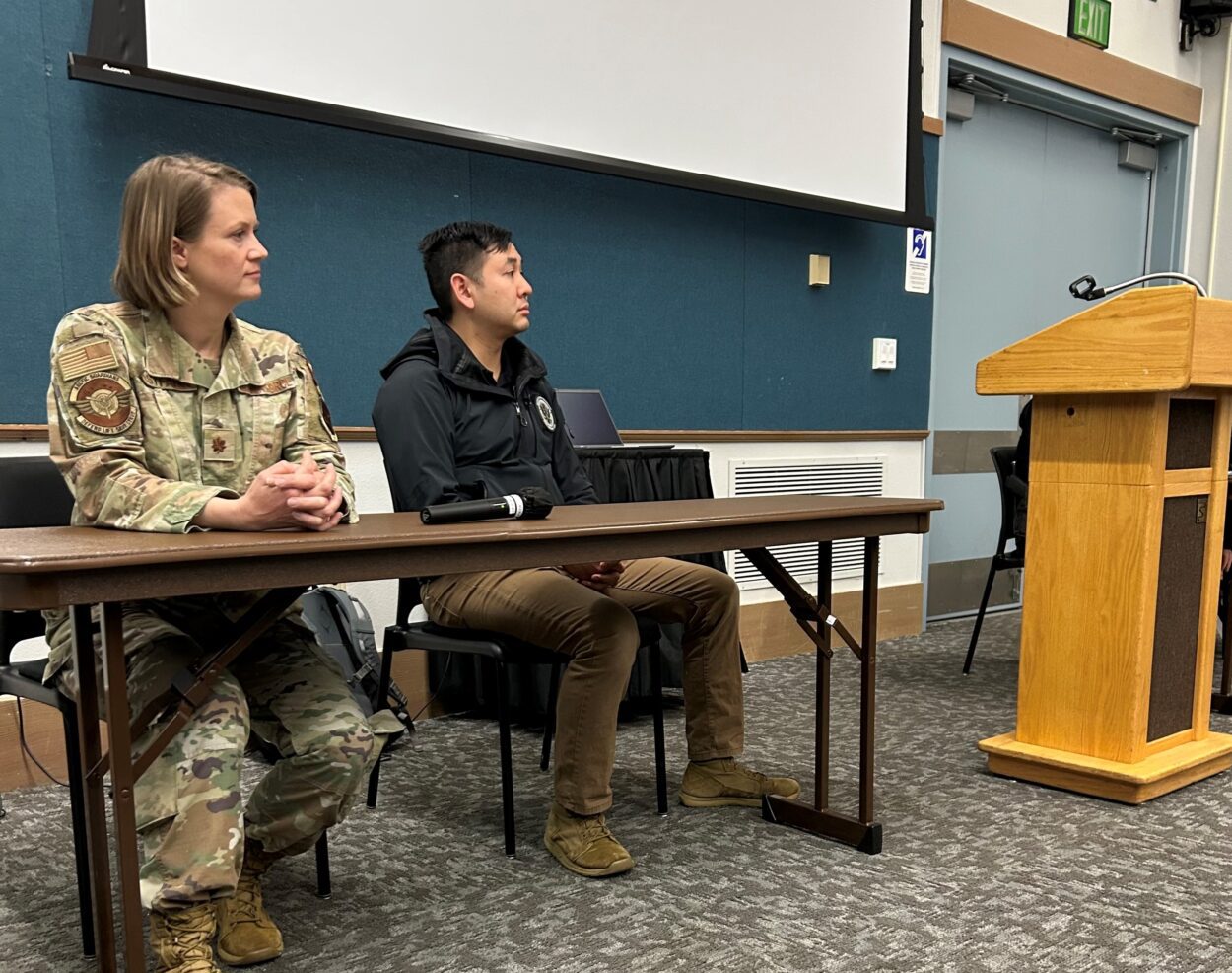
Law enforcement in Ketchikan on Feb. 6 seized almost 15,000 counterfeit pills containing fentanyl and two pounds of meth. The bust is linked to another seizure of nearly 10,000 pills back in January.
Altogether, the two busts were worth about $1.7 million of the drugs sold on the street.
In January, Ketchikan police arrested Andrew Hanson after they found about a half pound of powders containing meth and fentanyl. They also seized almost $15,000 in cash, a .38 special handgun, and nearly 10,000 counterfeit oxycodone pills containing fentanyl. Hanson was still behind bars on Tuesday when detectives carried out another seizure of 14,938 fentanyl pills and 1.8 pounds of methamphetamine. They say it is all part of the same investigation.
According to Alaska State Troopers, the seized fentanyl is about 38,000 fatal doses, enough to kill every one of the 14,000 people on Revilla Island multiple times over. Trooper Spokesman Austin McDaniel said in an email that, besides Hanson, no additional charges have been filed.
The flow of fentanyl into Ketchikan has become a major pain point in the community. Members of the Alaska National Guard were also in Ketchikan this week. They were deployed to brief the community on the dangers of fentanyl, especially for Ketchikan teens. They held a community meeting at the Ted Ferry Civic Center.
The briefing began with the National Guard showing attendees a short film by Dominic Tierno called “Dead on Arrival.”
“Who here knows someone – a loved one, a relative, or just someone around who’s died from overdose?” Sgt. Elijah Gutierrez, a civil operator with the National Guard’s Counterdrug Support Program, asked after the film.
Nearly everyone in the crowd put their hands up. Gutierrez then broke the news about the day’s bust.
“20,000 pills for Ketchikan tonight that aren’t here, but others are getting through,” he said. “You’re being targeted because a pill here costs $100 versus $10 in Anchorage. It’s very lucrative to sell pills here. That makes you a target.”
He said the goal tonight is prevention through education. Gutierrez referenced something a Ketchikan high school student said to him to demonstrate the severity of the situation: “He said ‘You can’t even try to experiment with drugs, because you just don’t know what’s in them. And you don’t know if you’re gonna die.’ And I was like, ‘job done.’ If a high school student knows about that and has the information and is aware of it, that’s hope.”
The Ketchikan Wellness Coalition also took the stage to talk about youth prevention. Director Jackie Yates said the coalition uses federal grants to bring drug prevention instruction to local schools, including “Ketchikan Youth for Change,” a program that uses a group of youth ambassadors to promote the anti-drug message among their peers.
“High school students and middle school students that are sharing the message that they choose everyday not to use drugs,” Yates explained. “Isn’t that the most powerful message? Everyone assumes that everyone’s using drugs – we see movies and TV and the perception is that drugs are everywhere. Well, these 17 kids say it’s not.”
The coalition will be holding an event in May where parents can walk through a mock high schooler’s staged bedroom and attempt to spot hidden signs of drug and alcohol misuse.
One resident in attendance asked if the video was being shown at the local warming shelter to educate the homeless population.
“I think it’s also poignant to note that the majority of people who are consuming fentanyl are actually not homeless individuals,” Yates said. “Which can be really shocking as well – it is far more prevalent outside of that population just based on price and access.”
Another concern raised was whether the local police and the National Guard are testing seized fentanyl for xylazine. That’s a veterinary sedative that when mixed with fentanyl, increases fatality. Xylazine isn’t an opioid so it makes naloxone, or Narcan – the standard treatment for someone overdosing on an opioid like fentanyl – not work as well. The U.S. Drug Enforcement Administration reported in 2022 that nearly a quarter of all fentanyl tested positive for xylazine.
Ketchikan Police Chief Jeff Walls said he isn’t aware of any statistics on xylazine, but the fentanyl on the island is getting stronger – enough so that they increased the standard Narcan dosage administered by the island’s emergency responders.
“So we are seeing an increase in the potency of the fentanyl,” Walls told the crowd. “Either way, we’re what we’re looking at is a death sentence and that’s why we want it off the streets.”
Get in touch with the author at jack@krbd.org.








